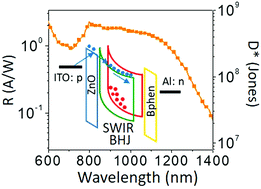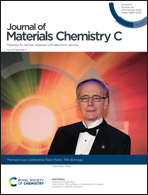Tuning the charge blocking layer to enhance photomultiplication in organic shortwave infrared photodetectors
Abstract
Emerging infrared photodetectors have reported a high level of gain using trap-assisted photomultiplication mechanisms enabling significant enhancements in their sensitivity. This work investigates a series of interfacial materials in order to understand how charge blocking layers facilitate trap-assisted photomultiplication in organic shortwave infrared detectors. The hole blocking layers induce accumulation of photogenerated holes at the interface, which in turn lowers the electron injection barrier and enables photomultiplication. In addition to examining photoresponse characteristics, the device dark current is analyzed by fitting to a charge injection model to quantify injection barriers. This demonstrates that the electric field induced barrier lowering effect plateaus with increasing applied bias. Among the interfaces studied, the best detectivity is observed using the hole blocking layer bathophenanthroline (Bphen), which reduces the probability of recombination and extends the lifetime of trapped holes to increase photomultiplication. This leads to a responsivity of 5.6 A W−1 (equivalent external quantum efficiency = 660% at 1050 nm) and detectivity of 109 Jones with broadband operation from 600 nm to 1400 nm.

- This article is part of the themed collections: Celebrating Tobin Marks’ 75th Birthday and Journal of Materials Chemistry C HOT Papers


 Please wait while we load your content...
Please wait while we load your content...
